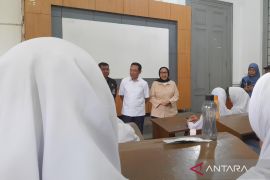Director General of Sea Pollution Control at the Environment and Forestry Ministry MR Karliansyah said plastic made up around 37 percent of 1.2 million tons of garbage in the country`s seas .
"Sea garbage has become a world problem and plastic garbage is the most dangerous as very many fishes in the sea found to have eaten plastics," Karliansyah said, adding the plastic was found when the fish bellies were split open.
Karliansyah, who was here to attend the ceremony of commemorating the Environment Day highlighted with "Coastal Clean Up" activity on the Binor beach, said his information was based on a survey by the Environment and Forestry Ministry in October 2017 in 18 coastal districts areas and cities.
The finding, however, showed that the condition was by far not as bad as said by a French researcher that Indonesia was the second largest contributor to sea garbage in the world, he said.
The result of the survey negates the allegation, he said, adding "the condition in Indonesia is still quite good despite the plastic garbage."
He said 50-70 percent of the sea garbage came from on shore and the rest from the sea itself such as from ships.
"We will continue to carry out evaluation that we have data in two consecutive years and as part of the program to achieve the government target of making Indonesia free from plastic garbage in 2025," he said.
He said the Coast Clean Up activity would be made regular by the local people to serve as an example for other coastal areas that would make people more aware of the importance of keeping the sea clean
Head of the East Java Environment Office Dyah Susilowati said she appreciates the local people involved in cleaning up the coast and said she would seek to make the activity routine in the province.
Reporting A Malik Ibrahim
Editing by Yoseph Hariyadi
Reporter: antara
Editor: Heru Purwanto
Copyright © ANTARA 2018












